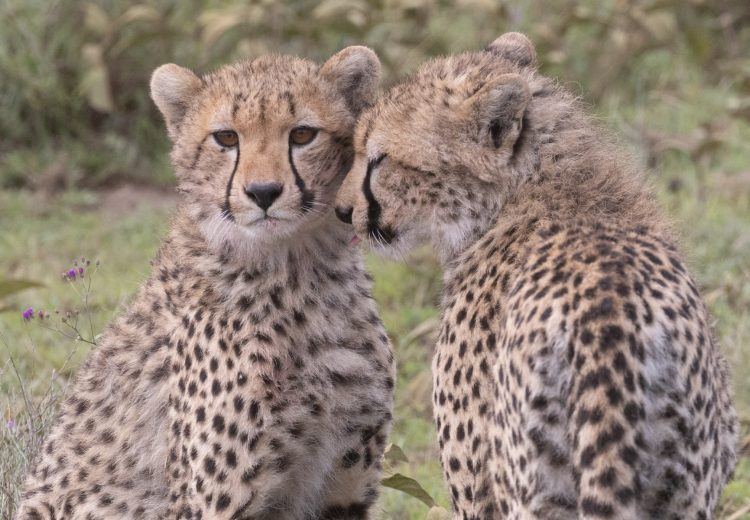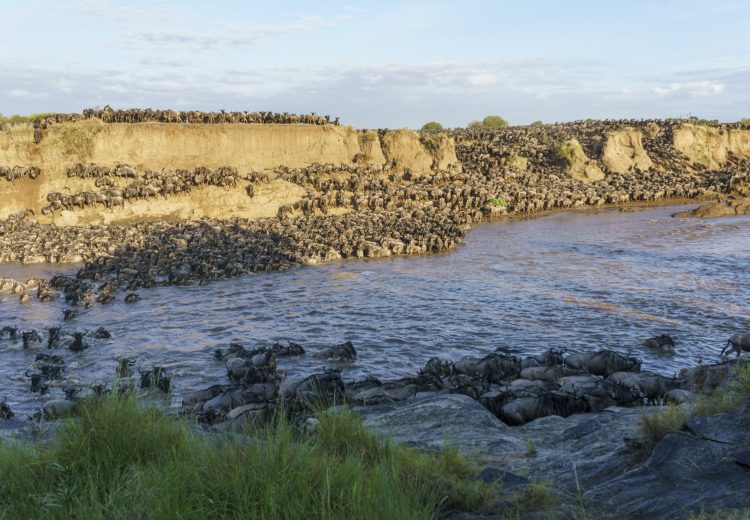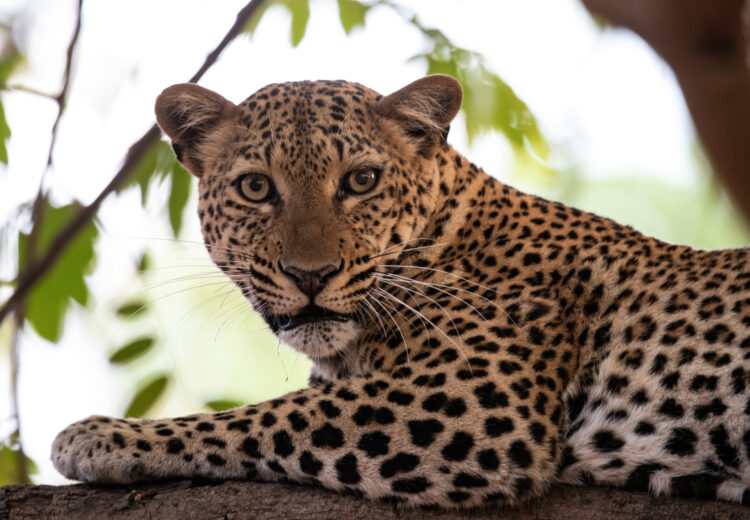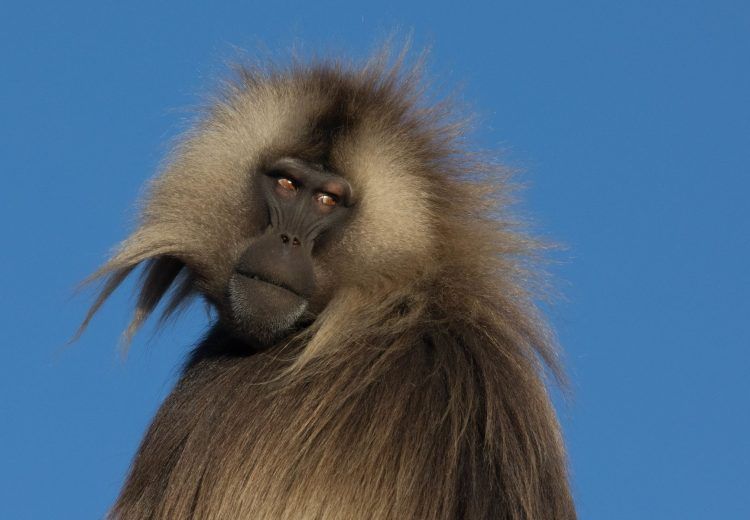Uganda
UGANDA WILDLIFE: Gorillas, Chimps and Shoebills





















































Chimpanzee (image by Mark Beaman)

White-winged Terns at Mabamba (image by Mark Beaman)

Fishermen at sunrise (image by Mark Beaman)

Mountain Gorilla mother and young (image by Mark Beaman)

Golden Monkeys (image by Mark Beaman)

Golden Monkeys (image by Mark Beaman)

Mountain Gorilla female and young (image by Mark Beaman)

The extraordinarily long toes of the African Jacana or Lilytrotter allow it to walk on waterlily pads (image by Mark Beaman)

Golden Monkeys fighting (image by Mark Beaman)

Mountain Gorilla (image by Mark Beaman)

Golden Monkey (image by Mark Beaman)

Mountain Gorilla (image by Mark Beaman)

Mountain Gorilla (image by Mark Beaman)

Young Mountain Gorilla (image by Mark Beaman)

The Goliath Heron is up to 5 feet (152 cm) tall! (image by Mark Beaman)

Silverback male Mountain Gorilla (image by Mark Beaman)

Chimpanzee (image by Mark Beaman)

Shoebill (image by Mark Beaman)

Golden Monkey (image by Mark Beaman)

African Jacana (image by Mark Beaman)

A hand close to our own (image by Mark Beaman)

Silverback male Mountain Gorilla (image by Mark Beaman)

Blackback male Mountain Gorilla (image by Mark Beaman)

A Mountain Gorilla chews quietly at Bwindi Impenetrable Forest (image by Mark Beaman)

Chimpanzee (image by Mark Beaman)

Young Mountain Gorilla (image by Mark Beaman)

Chimpanzee (image by Mark Beaman)

A silverback male Mountain Gorilla relaxes after a meal (image by Mark Beaman)

Yellow-billed Stork (image by Mark Beaman)

Shoebill preparing to strike (image by Mark Beaman)

Shoebill (image by Mark Beaman)

Mountain Gorilla (image by Mark Beaman)

Shoebill (image by Mark Beaman)

A yawning Shoebill with closed nictating mebranes looks other worldly (image by Mark Beaman)

Chimpanzee (image by Mark Beaman)

White-winged Terns at Mabamba (image by Mark Beaman)

Golden Monkey (image by Mark Beaman)

Shoebill (image by Mark Beaman)

Golden Monkey (image by Mark Beaman)

Golden Monkey (image by Mark Beaman)

L'Hoest's Monkey (image by Mark Beaman)

Grey Crowned Cranes (image by Mark Beaman)

Mountain Gorilla (image by Mark Beaman)

Chimpanzee (image by Mark Beaman)

Chimpanzee (image by Mark Beaman)

Vervet Monkey (image by Mark Beaman)

Chimpanzee (image by Mark Beaman)

Chimpanzee (image by Mark Beaman)

Pink-backed Pelican (image by Mark Beaman)

Chimpanzee (image by Mark Beaman)

Golden Monkey (image by Mark Beaman)
|
Sunday 18th May –
Thursday 29th May 2025 Leader: Inger Vandyke |
12 Days | Group Size Limit 6 (1 space) |
|
Monday 18th May –
Friday 29th May 2026 Leader: Virginia Wilde |
12 Days | Group Size Limit 6 |
UGANDA WILDLIFE: GORILLAS, CHIMPS AND SHOEBILLS PHOTOGRAPHY TOURS WITH WILD IMAGES
Winston Churchill once described Uganda as a fairy tale land, calling it the ‘Pearl of East Africa’. Here the ancient kingdoms of Buganda, Bunyoro and Ankole flourished long before the first European explorers came in search of the source of the Nile. In colonial times it was regarded as the most beautiful and potentially the richest country in East Africa. Now, after many years of civil turbulence under Idi Amin and Milton Obote, Uganda has settled down once more under the rule of President Museveni and has rebuilt its important wildlife tourism industry.
Uganda is indeed a beautiful country: a green and fertile land of high plateaus, luxuriant forests, papyrus-fringed lakes and great swamps. It is also a land of contrasts. Here one can see the vast inland sea known as Lake Victoria, the source of the White Nile, and papyrus swamps where the bizarre and endangered Shoebill can still be found. In the west, there are great forests which cover huge areas and are home to many Mountain Gorillas, Chimpanzees and Golden Monkeys. Uganda is undoubtedly the friendliest country in East Africa and offers visitors the opportunity to experience unspoilt African wilderness at its finest.
This wonderful Uganda wildlife photography tour will take us first to Ziwa Rhino Sanctuary. Established in 2005 to re-introduce the threatened Southern White Rhinoceros in the wild, the sanctuary is the only place in the country where one can observe these endangered creatures, thrillingly, up close and on foot. Accompanied by the park rangers for safety, we’ll have two opportunities, one in the afternoon until sunset and the following morning, under special permit, to return at sunrise to take advantage of the soft warm light of dawn.
There’s nothing in the world like spending time on the ground with Gorillas and Chimpanzees in the wild. They are, after all, our closest living relatives who share over 98% of their genetics with humans. Communining with these creatures watching their gentle expressions, the way in which they engage with each other in communities, nurse and play with their young, feed and groom is enough to move many guests to tears.
After three Chimpanzee and two Mountain Gorilla treks, we’ll head for another close encounter with the Golden Monkeys. These endangered primates live in a very different ecosystem, primarily dominated by bamboo. They are habituated to human’s presence, so don’t get surprised if one runs under your legs! There’s a huge conservation effort in place to preserve their survival and habitat.
Last but not least, we’ll head to Mabamba swamps, looking for perhaps one the most charismatic and prehistoric-looking birds in the world, the Shoebill. We’ll head out very early in the morning in wooden boats in search of these charismatic birds who feed on the fish from the moving water in the swamp. Some other birds of interest in the swamp include both African and Lesser Jacanas, Blue-breasted Bee-eaters, Pied, Giant and Malachite Kingfishers. With luck, we will find dainty Black Herons engaging in their quirky act of ‘umbrella fishing’.
We’ll have the time to freshen up and enjoy a final celebratory lunch before we return to Entebbe to catch an evening flight back home.
What makes the Uganda Wildlife Photography tour with Wild Images special
Firstly, our tour is the most comprehensive Uganda primate and great ape photography tour available. While we focus on excursions to photograph Mountain Gorillas and Chimpanzees, we will also visit a sanctuary for the endangered Golden Monkey who have made a stunning stretch of bamboo forest their charismatic home. While we are travelling we may encounter Grey-cheeked Mangabey, L’Hoest’s Monkey and Red Colobus.
Secondly, our tours are limited to just six participants, which is smaller than many Uganda wildlife photography tours, allowing guests to enjoy a more intimate experience.
We will spend an afternoon and morning tracking Southern White Rhinos on foot with rangers. Staying out until dusk and then beginning, under special permit, at sunrise the following morning, you will be able to get to eye level with these iconic African creatures at a reserve that is preparing them for eventual reintroduction to the wild.
Humans share 98.5% of genes with chimps, and their dexterity in using tools is remarkably human. Several groups in Uganda have been habituated, with the highest concentration in Kibale National Park, which is where we will track them.
Encounters with mountain gorillas an unmatched wildlife experience. Closely watch the dynamics of a gorilla family, how they get on with their daily life. Seeing them at close range is an experience that will stick with you for rest of your life. Nothing can prepare you for the surge of emotion that takes over when you see a Mountain Gorilla for the first time.
Accommodation
Our Uganda Gorillas, Chimps & Shoebills wildlife photography tour uses comfortable hotels/lodges throughout.
Transport
Road transport will be by 4×4 passenger van. Main roads are mostly good, but can occasionally be rough.
Climate
Uganda’s climate is largely tropical with two rainy seasons per year, March to May and September to December. May is a very good time to avoid crowds. We’ll move from the arid habitat in Ziwa to a more humid environment for chimps, gorillas and golden monkey, to then return to a swampy area for the shoebill.
Photographic Equipment
The most useful telephoto is normally a 100-400mm lens for a full-frame DSLR or mirrorless. If you use a prime lens, 200mm, 300mm or even 400mm might be very handy. 400mm or more is often needed for Shoebill and other birds.
Also, highly recommended a wide-angle lens, often gorillas, chimps and Golden Monkeys can come close. Something like 24-70mm or 24-120 would be ideal. Although all lodges have recharging capabilities we recommend extra batteries, and a rain-proof cover for the camera/lens in case of rain.
All the focal lengths mentioned above relate to full-frame cameras. Please adjust as appropriate for crop-sensor and micro four-thirds cameras.
A tripod can be a heavy burden on this particular tour, owing to the amount of walking, but a monopod can be helpful if you use a heavy telephoto.
If you have questions about what equipment you ought to bring, please contact us.
Photographic Highlights
- Track endangered Southern White Rhinos on foot in Ziwa Rhino Sanctuary at dusk and dawn
- Three visits to the chimpanzees of Kibale National Park, following them while they feed, play, groom or rest
- Enjoy two treks in Bwindi Impenetrable Forest where we will have adrenaline-fuelling encounters with Mountain Gorillas
- Walk with golden monkeys in their charismatic bamboo forest
- Photograph the prehistoric-looking Shoebill and other birds in the Mabamba swamps
OUTLINE ITINERARY
- Day 1: Arrive in Entebbe and transfer to our guest house for an overnight stay.
- Day 2: Morning drive to Ziwa. After lunch we will enjoy our first walk with white rhinos in the afternoon
- Day 3: Morning walk with white rhinos, then depart for Kibale Forest National Park
- Day 4: Morning and afternoon treks with Chimpanzees in Kibale Forest National Park
- Day 5: After a morning of chimpanzee trekking the afternoon will be spent at leisure
- Day 6: After breakfast drive to Buhoma, near Bwindi Impenetrable Forest National Park
- Day 7: Morning trek to photograph Mountain Gorillas
- Day 8: Morning trek to photograph Mountain Gorillas
- Day 9: Drive via Bwindi Impenetrable Forest National Park to Mutanda Lake
- Day 10: Trek with Golden Monkeys in Mgahinga National Park. Overnight at Mutanda Lake
- Day 11: Drive from Mutanda Lake to Mbamba Swamp.
- Day 12: Early morning with Shoebills and other water birds of Mbamba Swamp. Lunch at our lodge and return to Entebbe for an evening flight where our tour will end
To see a larger map, click on the square-like ‘enlarge’ icon in the upper right of the map box.
To see (or hide) the ‘map legend’, click on the icon with an arrow in the upper left of the map box.
To change to a satellite view, which is great for seeing the physical terrain (and for seeing really fine details by repetitive use of the + button), click on the square ‘map view’ icon in the lower left corner of the ‘map legend’.
UGANDA WILDLIFE: GORILLAS, CHIMPS AND SHOEBILLS PHOTOGRAPHY TOUR:
PRICE INFORMATION
Wild Images Inclusions: Our tour prices include surface transportation, accommodations, meals and entrance fees.
We also include all tipping for local guides, drivers and accommodation/restaurant staff.
We also include three Chimpanzee Tracking Permits at Kibale, two Gorilla Tracking Permits in Bwindi and one Tracking Permit for the Golden Monkeys in Mgahinga: See explanation in Overview.
Deposit: 40% of the total tour price (which includes all permit fees). Our office will let you know what deposit amount is due, in order to confirm your booking, following receipt of your online booking form.
Cancellation Charges: For this tour, the cancellation charge for cancellations made 6 months or less before the tour start date is 100% of the total tour price. Cancellation charges earlier than this are at standard Wild Images rates (please see Booking Information).
2025: confirmed $10490, £8230, €10010, AUD16670. Entebbe/Entebbe.
2026: provisional $10590, £8310, €10110, AUD16830. Entebbe/Entebbe.
Single Supplement: 2025: $580, £450, €550, AUD920.
Single Supplement: 2026: $600, £470, €570, AUD950.
If you are travelling alone, the single supplement will not apply if you are willing to share a room and there is a room-mate of the same sex available.
This tour is priced in US Dollars. Amounts shown in other currencies are indicative.
Air Travel To & From The Tour: Our in-house IATA ticket agency will be pleased to arrange your air travel on request, or you may arrange this yourself if you prefer.
UGANDA WILDLIFE: GORILLAS, CHIMPS AND SHOEBILLS PHOTOGRAPHY TOUR: DETAILED ITINERARY
Day 1
Upon arrival at Entebbe International Airport, you will be transferred to our guest house in Entebbe.
Day 2
After breakfast, drive to Ziwa Rhino Sanctuary. Established in 2005, Ziwa’s mission is to reintroduce southern White Rhinos back into the wild at Murchison Falls. In collaboration with the Uganda Wildlife Authority, Ziwa originally began with only 6 rhinos at the project. This number increased to 34 by the start of 2023. All the rhinos at Ziwa are free to move around the 27 square miles within the ranch. Therefore, it is often necessary to drive to the areas where the rhinos are, before continuing the trek on foot.
After lunch, together with a guide you will track the rhinos and observe them in their habitat at a very close and safe distance.
Day 3
We have a special permit today to enter the sanctuary at sunrise. After a second rhino trek, we’ll drive to Kibale National Park in western Uganda. Kibale Forest is one of the best areas in Uganda to see Chimpanzees.
Day 4
After a mandatory briefing, we will start our hike into the forest. Local forest rangers keep a close watch on the activities of the various families and we will arrange to track Chimpanzees where we have a very high chance that we will encounter a troop of these most human of primates. It is often possible to have a good length of time with them (it all depends on how cooperative they are). We are sure to hear their deafening, blood-curdling screams echoing through the forest and we should enjoy wonderful views of these fascinating cousins of ours. In Kibale one of the largest habituated families of Chimpanzees has over 120 individuals making this reserve one of the best locations in Africa for Chimpanzee viewing. A second trek is planned after lunch.
Day 5
We’ll return to the forest for our third and final Chimpanzee trek, before enjoying an afternoon at leisure in our comfortable lodge. This is our time for a rest or having an image review discussion.
Day 6
After an early breakfast, we head to depart for Bwindi Impenetrable Forest National Park, home of the endangered Eastern Gorillas.
These Ugandan animals, which show shared characteristics of both lowland and mountain forms, could, in fact, be an endangered subspecies or even a full species in their own right.
A close encounter with a group of these gentle giants is a profound experience that will make an indelible impression. The gorillas are fully protected in the park and you will be able to track a group of these marvellous animals through the dense, damp forest and thickets of giant bamboo on the slopes of the mountain. The terrain can sometimes be steep and rough, but the guides will cut a path through the dense understorey of giant nettles and wild celery if necessary. As you approach a group your guides will make strange grunting noises to reassure the gorillas that you are merely harmless tourists. These huge animals are surprisingly docile and often completely unconcerned by the presence of humans, so it is usually possible to get to within a few metres of them as they play, feed and rest. There is no need to say that this is an experience which you will never forget!
Day 7 – 8
After an early breakfast, transfer to the national park offices where we will be briefed and then allocated a gorilla family.
Upon sighting the gorillas, we’ll spend the allowed one hour with them as they go about their daily life, feeding, grooming and playing.
The afternoon will be at leisure, providing another opportunity for photo review and discussion.
Day 9
After breakfast, transfer from Buhoma via the upper zone of Bwindi Impenetrable Forest National Park to Mutanda Lake for a two nights stay at a comfortable resort.
Day 10
After breakfast, transfer to Mgahinga National Park for Golden Monkey trekking. Located in southwest Uganda, Mgahinga is the only protected area in the country that harbours endangered Golden Monkeys. They can also be found in Volcanoes National Park in Rwanda and the Virunga National Park and Kahuzi Biega National Park in the Democratic Republic of Congo. This is a chance to walk through their bamboo forest home searching for these charismatic and photogenic creatures as they search for meals of bamboo shoots, branches, ripe fruits and sometimes insects.
Day 11
Depart from Mutanda Lake and head for the Mabamba Swamp, situated to the west of Entebbe. Mabamba is a wetland on the edge of Lake Victoria, northwest of the Entebbe peninsula in a village called Kasanje. It covers an area of 2424 hectares and is home to over 300 bird species. Mabamba Swamp is famous for lungfish which is known as mamba in the native language (Luganda) and this is the primary prey species of our final wildlife highlight in Uganda, the Shoebill.
Day 12
An early start today. After a very short drive, we will board a wooden boat in search of the prehistoric-looking Shoebill, a huge, stork-like bird with a huge, shovel-shaped bill. Sometimes called the Whale-headed Stork, this extraordinary bird, which is placed in a family of its own, is confined to papyrus swamps and has its main stronghold in the inaccessible swamps of southern Sudan and central Zambia.
We’ll depart after lunch for Entebbe to connect with an international flight back home.
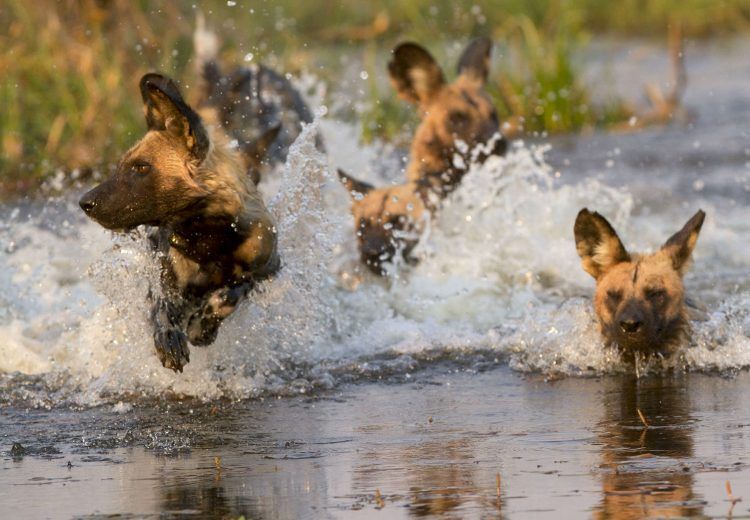
Botswana & The Okavango
November 2025






















































